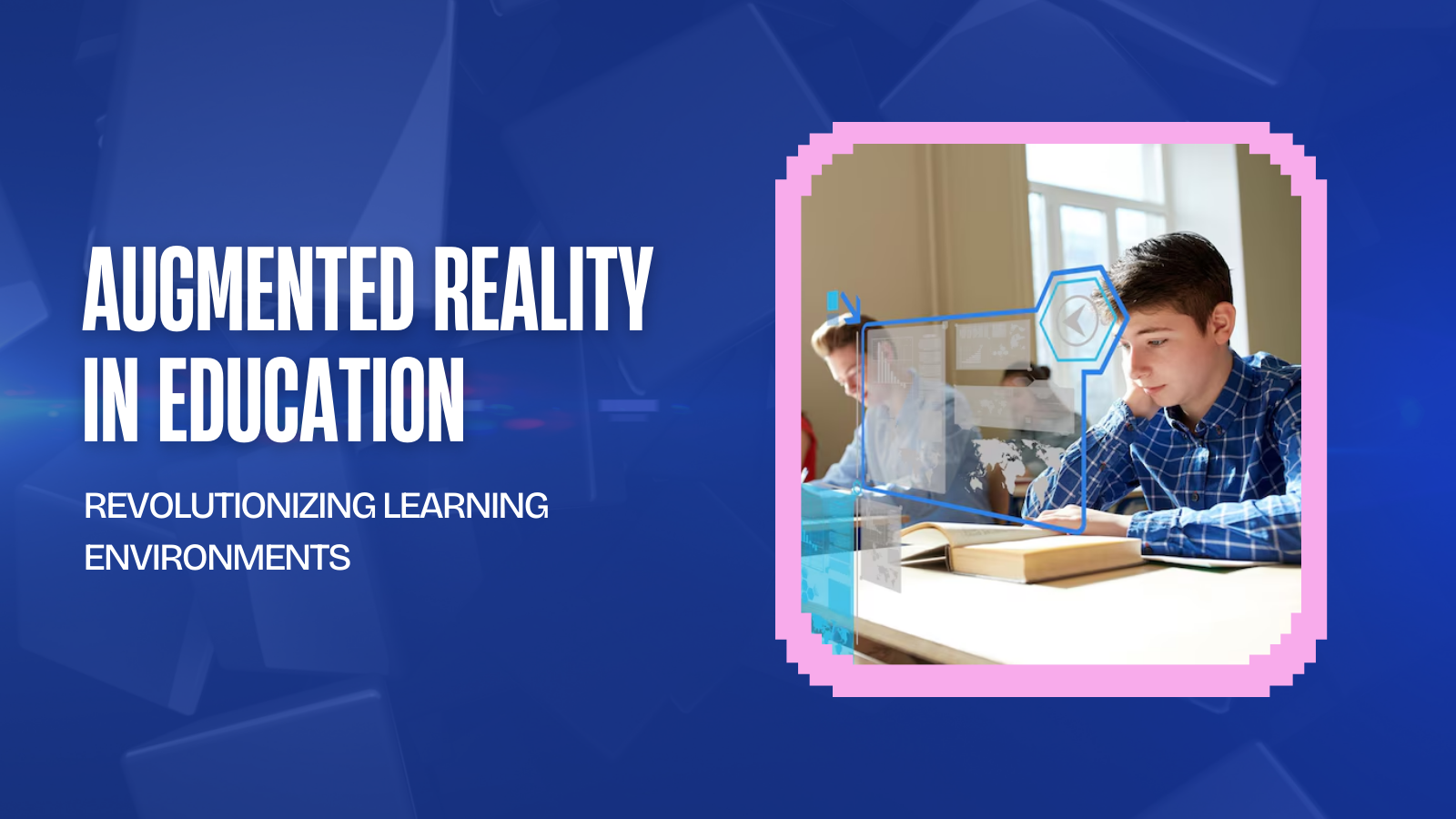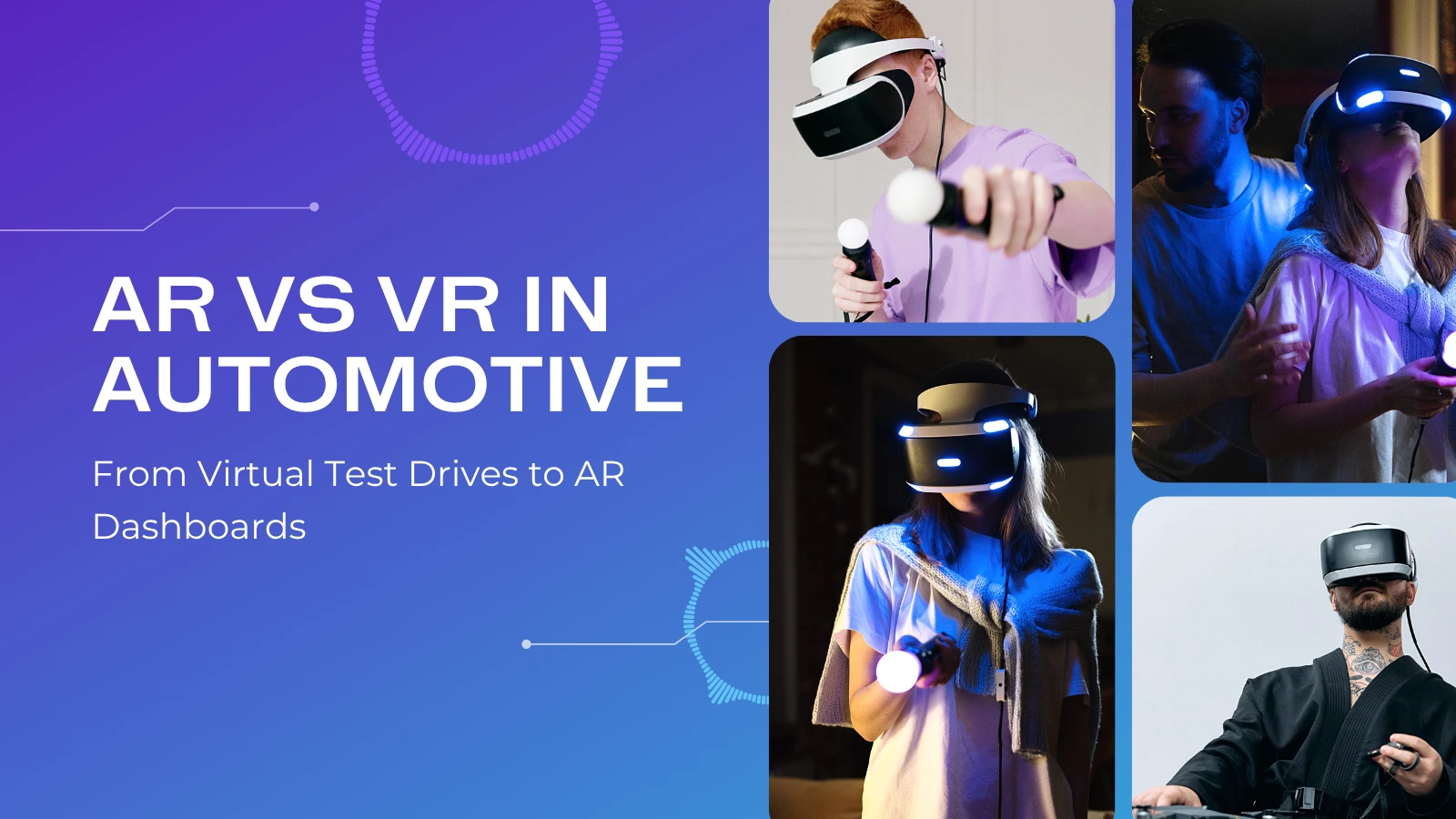Augmented Reality in Education: Revolutionizing Learning Environments
Immersive, Inclusive, and Interactive Classrooms with Augmented Reality
Augmented Reality (AR) is quickly revolutionizing how we know, access, and interact with information. In the digital-first world of the present, conventional teaching methods fail to entice and hold the attention of digitally born learners. Through the adoption of AR in classrooms, learning is transforming from passive to participatory, providing immersive experiences that boost understanding, memory, and learner engagement extensively. This learning revolution is enabled by advances in mobile technology and the increasing power of specialist augmented reality app development firms serving the educational market.
What sets AR apart in learning is its capacity to render abstract or invisible ideas into visual and interactive representation. Envision a student of biology learning about the human heart—not from book diagrams—but through interacting with a 3D pulsating heart hovering in the air, which they can examine, cut open, and learn from through their tablet or AR glasses. Such engagement is immensely more effective than any 2D material, providing haptic learning through visual simulation.
The effectiveness of AR education depends on cooperation between teachers and computer programmers. With increasingly advanced AR content, there is an increasing need for Augmented reality app development company solutions that have the capacity to customize applications according to particular learning requirements, including visualizing complicated math equations, visiting historical landmarks in 3D, or comprehending scientific principles through real-time simulations. No longer are such services add-ons; they are increasingly becoming part of the learning environment of innovative institutions.
In addition, AR fills knowledge gaps in students with varying abilities. A dyslexic child, for example, may struggle to read written content, but may enjoy audio-visual AR overlays that render content more palatable. Likewise, tactile learners may take advantage of touch-based interactivity in AR experiences. This inclusive potential is driving schools and universities towards the investment in AR-ready devices and collaborating with an augmented reality app development company to develop bespoke solutions that comply with curriculum standards.
Another significant factor is that AR is not limited to physical classrooms. In hybrid or remote learning settings, AR can replicate classroom-level interaction. By grounding digital content in real-world environments, students can engage in field trips, science labs, or history lessons without stepping out of their homes. This makes AR especially useful in sustaining educational continuity in the event of disruptions such as pandemics or natural disasters.
By its nature, AR is augmenting, not replacing, teachers and traditional techniques but elevating them. With AR solutions built by passionate augmented reality app development firms, educators are now enabled to redefine lesson plans, add game-like elements, and customize learning in ways they never thought possible. As acceptance grows, it is evident that AR is not merely a passing fad—it is the cutting-edge of 21st-century learning.
Advertising the Future: Awareness and Adoption of AR in Education
Widespread use of augmented reality in classrooms would be impossible without strategic marketing and outreach efforts from tech developers and educational institutions. Growing awareness about the value of AR is imperative not only to justify investments but also to ensure educators, parents, and students are well aware of its potential. Numerous educational startups and schools are looking to an augmented reality app development company not only to create but also to promote such innovative educational tools.
Successful advertising in this case involves demonstrating—not explaining—the power of AR. Most campaigns involve demo days, interactive webinars, teacher feedback, and pilot programs that provide stakeholders with a hands-on experience of AR. When a teacher illustrates how a virtual microscope allows students to see cells at a molecular level, or how an AR-enhanced map enables history students to "walk through" ancient Rome, the value becomes real. These compelling images are the best salespeople for AR in education.
This is where augmented reality app development services extend beyond technology implementation. Such companies typically provide branding, product walkthroughs, and user onboarding support to make their AR solutions take off. It is not merely about creating an app, it is about making it usable, interesting, and sustainable for educational institutions. Most AR development companies now provide bundled services that cover user interface design specific to young learners, backend systems for analysis, and training materials for teachers.
The success stories are already there. Schools and institutions that have incorporated AR witness an increase in the performance of students, increased participation in the classroom, and fewer dropouts in technical subjects. These are the statistics that are crucial for school boards and university stakeholders who need data-backed evidence before they invest in technology. Feedback from teachers who have collaborated with an augmented reality app development company often speaks about how AR revived love for learning among previously disillusioned students.
In addition, educators and educational influencers on such social media platforms as YouTube and TikTok greatly help to raise awareness of AR in education. Bite-sized, interactive lessons are shared in short videos that become viral, disseminated to thousands of educators globally. This type of word-of-mouth marketing is a supplement to conventional advertising and contributes to established education by positioning AR not only as a niche technology, but an educational imperative.
To help schools grow, most tech providers began to provide free or freemium versions of their AR software to schools in underprivileged areas. Low-cost entry software engenders long-term loyalty and the door to full integration. This humanitarian aspect of marketing is just an extension of a larger goal: democratizing access to innovative education no matter socioeconomic status.
In the end, outreach and advertising play pivotal roles in defining attitudes and prompting mass adoption of AR in schools. With the consultative expertise of a seasoned augmented reality app development company, schools can make investments in AR bear fruit—not only in performance indicators but in crafting future-capable students.
Augmented Reality App Development: The Backbone of Smart Education
Behind each successful AR learning experience is a talented group of developers, designers, and education consultants. These are the individuals from an AR app development firm who translate educational ideas into immersive digital worlds. The AR app development process is both creative and technical, with cross-functional collaboration between educators, curriculum architects, and technology professionals to meet academic requirements and ensure that the solution is intuitive and engaging for learners.
The design process usually starts with the identification of the learning goals. For instance, if anatomy is to be taught to high school students, developers may work with biology instructors to decide on which body systems to cover, the level of detail for the images, and what type of interactivity would be most educational. The collaboration ensures that the final AR app is not only impressive but also efficient in promoting learning results.
One of the most important factors in developing an augmented reality app is content accuracy. In contrast to consumer-oriented entertainment AR apps, educational AR needs to be based on real-world facts and peer-reviewed academic material. Developers usually collaborate with subject matter experts to ensure the 3D models, animations, and simulations are not only scientifically correct but also pedagogically sound. That's why selecting the correct augmented reality app development services for educational institutions is crucial.
Another essential factor is platform compatibility. The AR apps developed should work flawlessly on a variety of devices—smartphones, tablets, AR glasses, and interactive whiteboards. Since not all schools possess the same technology, the apps should be optimized for both budget and high-end devices to provide equality of access for all students. Cloud-based apps and offline support are also commonly offered to overcome connectivity problems in remote regions.
Additionally, user experience (UX) and user interface (UI) design are crucial. Young learners specifically require intuitive navigation, voice prompts, and interactive visuals to keep attention. The addition of gamification features like points, badges, and leaderboards can additionally encourage students and foster positive competition. Several AR apps today include integrated analytics capabilities that enable teachers to monitor student progress and tailor subsequent lessons accordingly.
Security and confidentiality are also top of mind. As AR apps will have access to student data, including interaction, score, or location information, developers need to be compliant with regulations such as FERPA or GDPR. A professional augmented reality app developer uses encryption, secure authentication, and transparent consent protocols to keep student data safe.
Lastly, there should be constant support and maintenance. As curriculum standards change and new equipment comes out, AR apps need to be updated to continue being useful. Good development partners provide packages for maintenance, content updates, and teacher training to assure their solutions keep delivering benefits year by year.
In short, augmented reality app development is a complex and specialized process that lies at the heart of AR-powered education. With the appropriate development team, schools have the ability to deploy powerful AR tools that revolutionize classrooms, individualize learning, and ready students for an ever-more digital future.
Conclusion: The New Age of Experiential Learning
Education is radically changing. As conventional models yield to student-centered, interactive methods, Augmented Reality is taking its place as an agent of change. What once was a new idea is now a functional tool being utilized in schools worldwide. The success of AR in education is testament to the strength of collaboration between pioneering educators and innovative technology providers, especially those that provide augmented reality app development services specifically geared towards the education sector.
Today's students are no longer mere consumers of information—they are co-creators of their learning processes. With AR, they can visit ancient cultures, explore virtual frogs, or engage with planetary models in real-time. All this is made possible due to the diligence and abilities of an augmented reality app development firm, ensuring that the learning material is interactive, accurate, and available.
As the world's needs are for more personalized, scalable, and accessible learning grow, the importance of augmented reality app development will only intensify. From serving the needs of diverse learners to making distant learning possible, or making hard-to-learn subjects gameable, AR presents a solution fit for the future that conforms to the changing educational needs.
In the coming years, we can expect AR to be as common in classrooms as whiteboards and textbooks once were. With ongoing innovation and support from the development community, educators will continue to unlock new ways to inspire, engage, and empower students. The reality of tomorrow’s education is augmented—and it’s already here.
Subscribe Now
Get the weekly updates on the newest brand stories, business models and technology right in your inbox.
More Blogs
How Generative AI is Transforming Custom Software Development in 2025
The custom software development landscape is being revolutionized with the advent of Generative AI. With enterprises focusing on optimizing their operations and speeding up innovation compared to their peers, Generative AI has become a...
The Essential Guide to Automation AI: What Actually Works in 2025
AI Automation has demonstrably reshaped the workings of businesses by processing data and completing repetitive tasks faster and more efficiently than human workers. To illustrate, AI systems can now examine vast amounts of data, simul...
AR vs VR in Automotive_ From Virtual Test Drives to AR Dashboards
The automotive industry has experienced transformative changes in the recent years, all thanks to breakthroughs in immersive technology. The most notable changes are due to Augmented Reality (AR) and Virtual Reality (VR). The debate of...

 Awards & Recognition
Awards & Recognition








